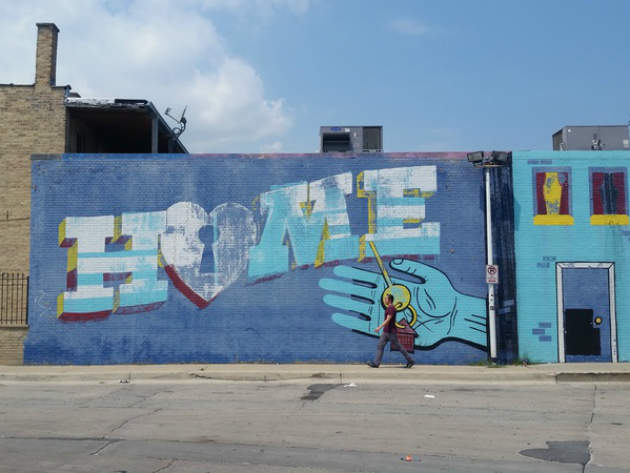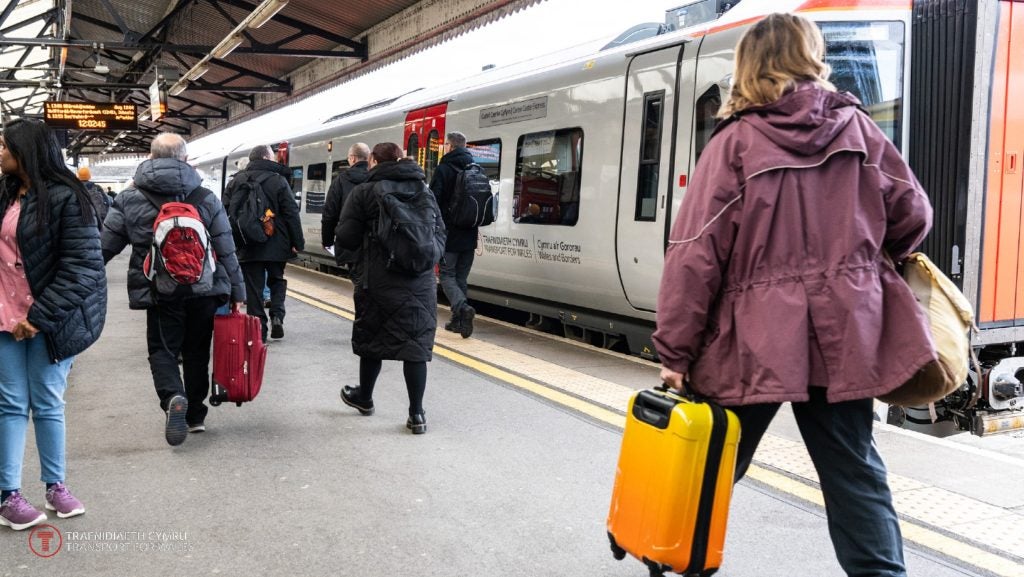
The US has long struggled to catch up with its European counterparts when it comes to public transportation.
Traditionally, lack of investment in infrastructure, as well as poor planning, means that today the American public transit network is lacking – and new $2.4bn budget cuts to passenger rail services by the Trump administration are feared to further cut off vital access to some 150 million Americans.
Over the past two decades, ridership has indeed risen. Statistics from the American Public Transit Association show that there was a 14% increase in total ridership between 1990 and 2016 across all means of public transport, and a whopping 52% rise in commuter rail ridership over the same period.
As the population is expected to grow by 70 million before 2045, the need for more public transport services, particularly railways, in the US is greater than ever.
But for new projects to be of real value to the community, thought must be given to how they fit into the larger neighbourhood or region they aim to serve.
Empirical evidence suggests that new public transit corridors, such as subways, light rail and commuter rail systems, play a big part in the gentrification of an area.
How well do you really know your competitors?
Access the most comprehensive Company Profiles on the market, powered by GlobalData. Save hours of research. Gain competitive edge.

Thank you!
Your download email will arrive shortly
Not ready to buy yet? Download a free sample
We are confident about the unique quality of our Company Profiles. However, we want you to make the most beneficial decision for your business, so we offer a free sample that you can download by submitting the below form
By GlobalDataAs soon as a neighbourhood is slated to become convenient and accessible, it also becomes desirable for high-income renters and buyers, which in turn prompts for-profit developers to replace affordable housing with brand new, high-end living spaces. When commercial interests take precedence, lower income families are the first ones to be pushed out.
“In a perfect world, there would be enough space for everyone, and even the residents could benefit from that job creation [of a new network],” says Rachel Reilly Carroll, associate director at Enterprise Community Partners, a non-profit that enables the creation of affordable homes next to transport hubs.
“But what we’re seeing is that people are getting displaced out of those communities and are forced to move into less desirable ones. Right now, the difference between a community that’s desirable and one that’s not desirable is accessibility to public transit.”
How transport changes the community
Last year, Carroll travelled across the US to visit ‘ground zero’ sites for new or upcoming transport infrastructure projects. On her journey, she met with people who had experienced transit-induced gentrification: residents who had been forced to give up their homes when a new rail station opened in their neighbourhood or others who were able to stay thanks to special grants, but now simply feel unwelcome in their area.
Transit-oriented development (TOD) can increase property values by as much as 150%, according to the National Association of Realtors.
In 2014, the Rockefeller Foundation and Transportation for America released a study that showed that public transport is a decisive factor in shaping where millennials choose to live and spend time.
Similarly, research published in the journal Urban Studies explored the connection between mass transit access and household income in New York and found that less advantaged groups “are increasingly concentrated in the more isolated areas of a city, a lack of transit access can severely impede economic opportunities” and concluded that “this dynamic compounds the economic divides that shape and challenge our cities”.
“Many express concern that absent market intervention, profit-maximising developers will seek the highest valued land uses for their projects, which will result in the gentrification of TODs and displacement of low-income populations in areas accessible to transit,” a 2015 study in Geography Compass reads.
The biggest issues can be seen in larger cities, such as Chicago, Pittsburgh, Denver and Atlanta.
In these cities, efforts are being made to promote the Equitable Transit-Oriented Development (eTOD) approach, ensuring that “all people along a transit corridor, including those who are low-income, have the opportunity to reap the benefits of easy access,” according to Enterprise Foundation’s mission statement.
‘I was gentrified’: new rail project leads to eviction

In Pittsburgh, Carroll met Eugene, a war veteran and now volunteer who was the victim of a mass eviction from Penn Plaza, an affordable housing complex taken over by for-profit developers in preparation for the opening of a $150m East Liberty transit centre.
The East Liberty six-acre development relied on nearly two dozen funding sources, including a $15m grant from the US Department of Transportation, and opened in October 2015 as a “project that reconnects communities and neighbourhoods”.
“Imagine you have lived here, qualified as a low-income tenant at some point in order to move in, this may have been your home for five, ten, 20 years, you don’t have a lot of money to figure out the next place to live and someone is telling you that you have 90 days to leave your home and figure out where to go.”
Recounting her meeting with Eugene, she says: “He thought gentrification was something that happened to other people. ‘I was gentrified’, he said to me, and you could tell how personal that was to him.”
Families threatened by the East Liberty redevelopment put together a Black Homes Matter pamphlet, in which they say that “the East Liberty transformation was – and still is – based on the removal of low-income black residents out of the neighbourhood at the very time that investment is returning and living conditions are starting to improve.”
Chicago’s stations as innovation hubs
Chicago has long been a city deeply segregated along racial and economic lines, and a place where “federal highway and rail projects divided communities, creating isolation and furthering segregation”, according to Enterprise.
Its famous L trains have been serving the city for 125 years this year, and over time, new stations have been added or upgraded to serve the growing and increasingly mobile population.
“The neighbourhoods that traditionally had a culture of low-income residents or working families are being invested in and revitalised by throwing up these huge condo buildings and restaurants that don’t serve those who live there now, but are meant to attract new folks to the neighbourhood,” Carroll says.
Brenette, one of the residents of a neighborhood called Wicker Park, told Carroll how accessible transport offers her the independence and flexibility she needs on a daily basis. However, she also mentioned that two families on her street had to sell their houses because they could no longer afford the property taxes.
To tackle some of these issues, authorities are now working with L-Evated Chicago, a new collaborative that will use existing rail stations to create hubs of opportunity. The goal is to conduct planning around targeted L stations on the Green line south, Green line west, Blue line north-west and Pink line south-west.
By dipping into a $90m fund provided under the Strong, Prosperous And Resilient Communities Challenge (SPARCC), L-Evated aims to remake the half-mile area around these rail stations into “centres of commerce, culture and social interaction”.
Atlanta’s new opportunity
Over the coming decade, $3bn will be spent on transit and infrastructure in Atlanta.
Last year, authorities approved the expansion of Metropolitan Atlanta Rapid Transit Authority (MARTA) bus and rail lines, as well as a $300m investment in projects such as Atlanta BeltLine, a network of public parks, multi-use trails and transit along a historic 22-mile railroad corridor connecting 45 neighbourhoods.
Funding is tipped to go toward the construction of a light rail transit system, as well as four new rail stations along the Atlanta BeltLine.
In its 2016 Region Plan, the Atlanta Regional Commission highlights the need for “public involvement”, and mentions its collaboration with the TransFormation Alliance to “improve the capacity for MARTA rail stations to accommodate new growth”.
A partnership of 17 government agencies, businesses and non-profits, the TransFormation Alliance will award $3bn in Metro Atlanta to ensure affordable housing and racial equity during the MARTA expansion, as well as involving residents, emerging community leaders and civic institutions in the decision making process.
“We do not want to be isolating people”

In Minnesota, the Central Corridor Funders Collaborative pushed for promoting eTOD along the new St Paul-Minneapolis light rail line, which became the first time trains had connected the Twin Cities’ downtowns in more than 60 years.
Neighbouring Denver has welcomed billions of dollars in transit infrastructure in the region over the past decade, including FasTracks, a $7.8bn transit expansion that added 122 miles of railway, 18 miles of bus rapid transit serving the district.
Mile High Connects, a collaboration of philanthropy, banks and non-profits is injecting $30m into efforts to ensure that this development will be of value for all in the community.
“All residents are benefitting from public transportation,” Carroll says. “It gives them that independence that people need to thrive, and be contributing members towards society. We do not want to be isolating people that cannot afford to have cars in communities that don’t have public transportation.
“You want to see that really measured and balanced improvement in cities, because they need that improvement, but you also want to do it in a way where there’s options for people to stay that can benefit.”





